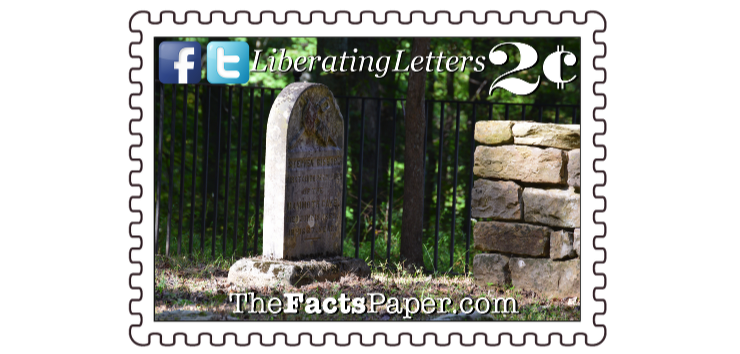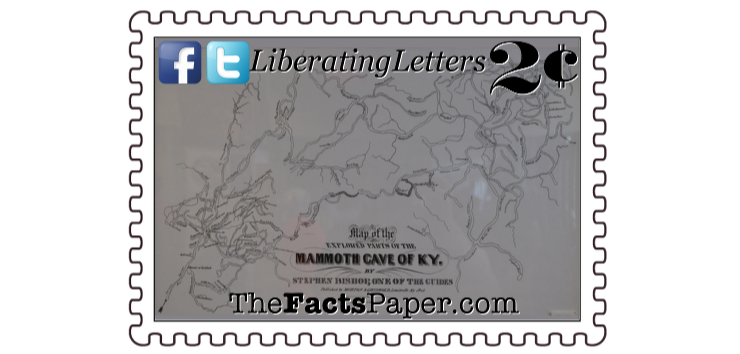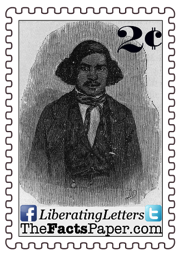Liberty, today’s culture seems to only celebrate achievements of blacks of the past century. However, history is overflowing with courageous and inspiring individuals throughout all of America’s past who shattered common stereotypes decades ago. It is easy to believe our founding was oppressive and horrible if you fail to learn such truths of those like Stephen Bishop. Not only did he become a sought after guide, he trained two other slaves whose families spent generations working at Mammoth Cave until the Federal Government took it over and reopened during Democrat President Franklin D. Roosevelt’s administration without any black guides.
A century ago, school children were taught and inspired by people such as Stephen Bishop. Today, our history is quickly and purposely being rewritten or erased by those with agendas. While minority parents are desperately seeking role models for their children, at best they are left with actors, athletes and artists who unfortunately begin to believe they need to be giving hand outs instead of a hand up. In reality, their communities give them dope dealers, gang members and rappers.
Contrary to popular belief, Jackie Robinson, Rosa Parks (see Walking To Freedom), Martin Luther King Jr. (see Free At Last?) and Oprah Winfrey did not break the color barrier. Those roadblocks were destroyed by people like Robert Smalls (see From House Slave To House Of Representatives), Phillis Wheatley (see Unshackled Speech), Wentworth Cheswell (see The Forgotten Black Founding Father), Hiram Rhodes Reveals (see The Forgotten Senator), Joseph H. Rainey (see The Forgotten Representative), John S. Rock (see Solid As A Rock), George Washington Carver (see The Peanut Man), Sarah Breedlove (see Secret Of Her Success), Dr. Mildred Fay Jefferson (see Doctor Of The Unborn), Benjamin Davis Sr & Jr (see Like Father, Like Son), and John Fox (see The Greatest Gift), along with Bishop, just to name a few.
It is essential that We The People educate ourselves and continue to keep these stories alive. The country’s children and future depend on it.
That’s my 2 cents.
Love,
Mom

Even though Bishop was offered his freedom on several occasions, he chose to keep his status as it was, working and exploring at the cave. However, he was eventually freed in 1856. His desire turned to raising enough money to take his wife and family to Liberia, yet he died on June 15, 1857, (though his tombstone reads 1859) before reaching that goal. Bishop was laid to rest on the Mammoth Cave grounds in “Old Guide’s Cemetery” despite the fact that Bishop is the only known guide to have been buried there.

June 15, 2017
Dear Liberty,
Stephen tossed a stone into the pitch black pit, counting 2.5 seconds before hearing it hit the bottom. He turned to H. C. Stevenson knowing full well both men were still determined to cross the 6-foot wide gap. After a moment of discussion, they gathered two cedar ladders to use as bridges. Their hearts pounded, as success would open miles of unknown paths in Mammoth Cave, possibly never before touched by human hands. Failure would result in certain death.
They laid the first ladder down, forcing it under the stones on the opposite side of the gap. Once Stephen felt it was secured, he straddled the makeshift bridge, scooting slowly across. It was probably fortunate their lanterns were not powerful enough to reveal the true depths of the crevice. It might have given the men pause, if only for a moment.
Once Stephen reached the other side, Stevenson placed his ladder, one a little longer and a little safer, over the pit. With Stephen securing it, Stevenson proceeded to cross with confidence and ease. Safely across, the men collected their lanterns, Stephen gathered their small bag of provisions, and they continued into the unknown.
Stephen Bishop was a slave who claimed to be of French and African descent, though his actual heritage is unproven. When Franklin Gorin purchased Mammoth Cave in 1838, only a fraction of the underground caverns had been explored. Gorin expanded the Inn and brought Bishop down to conduct tours. Bishop learned the known paths from current guides, but quickly began exploring on his own. After discovering several new sections, Gorin realized Bishop's natural curiosity would prove to be beneficial and profitable. When Stevenson visited Mammoth Cave and offered to pay for a private exploratory tour, there was no question who his guide would be.
The "Bottomless Pit," as it became known, was a natural barrier to explorers until Bishop and Stevenson crossed it. A cedar bridge was quickly constructed over the pit and tours were designed for visitors. The men also discovered the first known river to travel through the cave system, which they named the River Styx.
During his many explorations, Bishop found evidence of Native Americans, letting him know his was not the first to travel the caves and caverns of Mammoth Cave. However, the timing was right with Bishop's discoveries that Gorin and the media publicized his findings, arousing curiosity among the public. The site became so popular and valuable, that Gorin was able to sell Mammoth Cave and Bishop to a distant relative, Dr. John Croghan, in 1839, for a nice profit.
Over the years, Bishop gained notoriety across the country, and some claim the world, for his skills as a guide. At a time when slavery and racism was commonplace, white visitors specifically asked for the famous Stephen Bishop as their guide. Even in his day, Bishop was celebrated by those of all races. Gorin once wrote of Bishop: “I placed a guide in the cave – the celebrated Stephen, and he aided in making the discoveries. He was the first person who ever crossed the Bottomless Pit, and he, myself, and another person whose name I have forgotten, were the only persons ever at the bottom of Gorin’s Dome to my knowledge.” Bishop was not only well-educated, he also spoke several languages, two traits practically unheard of for a 19th century slave.
Known as “The Columbus Of Mammoth Cave,” Bishop not only explored the caves, he drew up a remarkably accurate map of their paths in 1824.
THE COLUMBUS OF MAMMOTH CAVE



